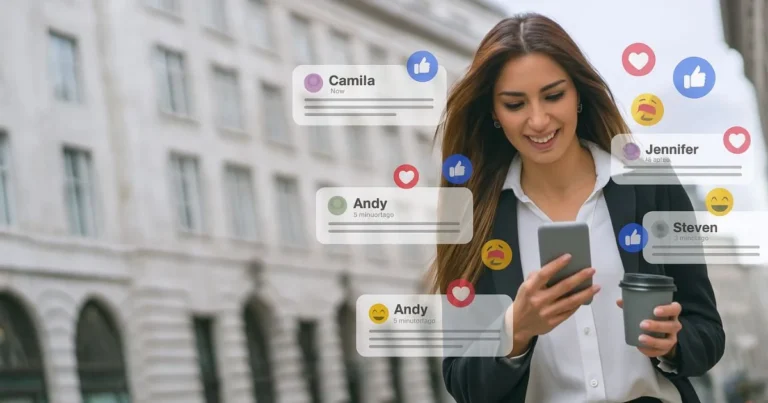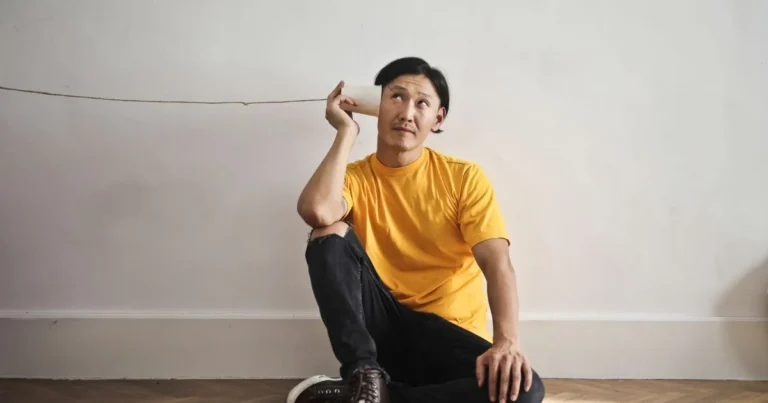The quiet one: What silence truly means?
In every family, classroom, coffee shop, or team meeting, there’s always one person who holds back. They listen, observe, sometimes smile… but rarely speak. While others jump in, interrupt, disagree, and debate with passion, the quiet one blends into the background. Is this simply shyness, a fear of speaking up — or a deliberate choice?
Behind the “quiet one” lies more than a lack of words. Their silence intrigues, raises questions, and sometimes unsettles. To better understand this phenomenon, we’ll explore it through the lenses of neuroscience, psychology, communication, sociology, and philosophy. Because silence is far from empty — it’s a presence filled with meaning.
When the brain chooses silence
Neuroscience reminds us of one fundamental truth: silence is not the absence of brain activity — it’s often the opposite. When we listen, our brains are just as active, sometimes more so, than when we speak. Brain imaging studies show that language areas like Broca’s and Wernicke’s regions remain engaged. Internal speech doesn’t stop; it lingers, waiting for the right moment to emerge.
Neuroscientist Antonio Damasio has highlighted how emotions influence our ability to speak. Anxiety, fear, or embarrassment can activate the amygdala, triggering an internal alarm that suppresses verbal expression. The body prepares to flee rather than to be exposed. In these moments, silence becomes a protective response.
Conversely, some people are wired for quiet. Jerome Kagan’s research on introversion shows that introverts have heightened physiological reactivity — their nervous systems become overstimulated easily. For them, silence is not withdrawal, but preservation. It’s how they remain grounded and centered.
In short, neuroscience reveals that silence is not a void but a rich internal landscape. Beneath the surface lies a storm of connections, emotions, and thoughts invisible to the outside world. But while brain science decodes the mechanics of silence, psychology brings us closer to its lived experience — the way it’s felt, endured, or consciously chosen.
🔗 Read also: The double-edged sword of communication: between understanding and manipulation
Fear, temperament, or identity?
Psychology helps us understand what silence reveals about the self. Each quiet person experiences their silence in a unique way, and it’s in those variations that we glimpse their inner world.
For some, silence stems from deep-rooted shyness. Philip Zimbardo’s research shows that shyness isn’t simply a personality flaw but a heightened sensitivity to others’ judgment. Every word feels like a fragile step forward, with the fear of stumbling in public ever-present. In this case, silence becomes a fragile armor — a form of self-protection.
Social anxiety goes even further. Here, silence is not just restraint but an inner battle. Speaking in front of others can trigger a racing heart, sweaty palms, and a blocked voice. It becomes a painful escape — one that keeps people from expressing thoughts they deeply wish to share.
But not all silence is rooted in fear. Some people simply prefer retreating from the noise. Introverts, for instance, don’t feel compelled to dominate conversations. They’d rather listen, reflect, and process. Speaking less is not a weakness for them — it’s a way of being. Carl Jung, who first distinguished introverts from extraverts, emphasized this point: neither is superior — they are simply different ways of engaging with reality.
Thus, group silence is never uniform. It may be a wound, a defense, or a personality trait. Sometimes, it even becomes a strength — the ability to hold back, to resist distraction, to choose words with rare precision. Because even in silence, the quiet one continues to act. Silence, after all, is not the absence of communication — it’s a language of its own.
When silence says it all
“You cannot not communicate,” wrote Paul Watzlawick. Even silence speaks. In a group, being silent can be more powerful than any speech.
Non-verbal communication says as much — if not more — than words. Posture, facial micro-expressions, gestures, and breathing patterns all reveal inner states. The quiet person doesn’t speak, but their body tells a story: a knowing look, a subtle tilt of the head, a half-smile — these can subtly shape a conversation.
In certain contexts, silence carries symbolic weight. In negotiations, silence can be a weapon: the one who remains quiet forces others to fill the gap — and often reveal more. In friendships or romantic relationships, silence can create intimacy. On the flip side, it may also signal withdrawal, disapproval, or a refusal to play along.
🔗 Explore further: Beyond words: can we think without words?
But silence is always interpreted — and not always accurately. What feels like a peaceful pause to one may appear as indifference or disdain to another.
Silence is never neutral. It always says something. But its meaning depends on context, place, and culture. A reserved gesture may be seen as respectful in one culture, and cold in another. That’s where sociology comes in — reminding us that silence is not just a personal trait, but a social construct shaped by collective norms and histories.
Cultural codes of silence
Émile Durkheim taught us that even our most personal behaviors are shaped by society. Silence is no exception. It’s molded by cultural codes, traditions, and expectations.
In some cultures, silence is a virtue. In Tibet, for example, it’s linked to meditation and wisdom — speaking little is seen as a sign of self-mastery and spirituality. In many Eastern traditions, silence isn’t disengagement, but a deeper form of presence — one listens, welcomes, and lets words settle.
In contrast, in many Western — especially Anglo-American — contexts, silence can feel awkward or even suspicious. Long pauses in conversation are quickly filled; fast-paced dialogue is valued, along with spontaneity and directness. In such settings, the quiet one may be seen as lacking confidence or social skill.
Even within a single culture, differences abound. In Mediterranean societies, speaking loudly and quickly signals warmth and involvement, while in Nordic countries, restraint and quiet are seen as signs of respect and control.
Sociology shows us that the quiet person never exists outside the social gaze. Their behavior will not be read the same in Marrakech, Tokyo, or New York. Discretion isn’t a universal trait — it’s a social product, sometimes seen as strength, sometimes as weakness, depending on the cultural script.
What silence leaves open
Societies assign many meanings to silence. In one place, it’s respect; in another, weakness; elsewhere, wisdom. But beyond culture and context, something persists: the enigmatic power of the unspoken.
This is where philosophy invites us to go further. Silence isn’t just a social habit or psychological trait — it’s a mode of being. From Pythagoras to Wittgenstein, and through the Sufi mystics, silence has threaded its way through centuries: to be silent in order to hear more clearly, to step back in order to truly exist.
🔗 Discover more: The silent language of the brain: Decoding what words cannot say
In a world saturated with noise, the quiet one resists — softly but firmly. They don’t just reject speaking — they give speech new weight. They remind us that there is a language beyond words — one made of presence, listening, and depth.
And perhaps this is what their discretion reveals: a singular way of inhabiting the world. One that doesn’t explain everything, but makes room for mystery.
References
Cain, S. (2012). Quiet: The Power of Introverts in a World That Can’t Stop Talking. Crown Publishing.
Damasio, A. (1994). Descartes’ Error: Emotion, Reason, and the Human Brain. New York: Putnam.
Durkheim, É. (1895). Les règles de la méthode sociologique. Paris : PUF.
Jung, C. G. (1921). Types psychologiques. Paris : Albin Michel.
Kagan, J. (1998). Galen’s Prophecy: Temperament in Human Nature. New York: Basic Books.
Watzlawick, P. (1967). Pragmatics of Human Communication. New York: Norton.
Wittgenstein, L. (1921). Tractatus logico-philosophicus. Londres : Routledge.
Zimbardo, P. (1977). Shyness: What It Is, What to Do About It. Reading: Addison-Wesley.

Ahmed El Bounjaimi
Copywriter-Content Designer
Master’s in Organizational Communication, Hassan II University
Bachelor’s in Philosophy of Communication and Public Spheres, Hassan II University







